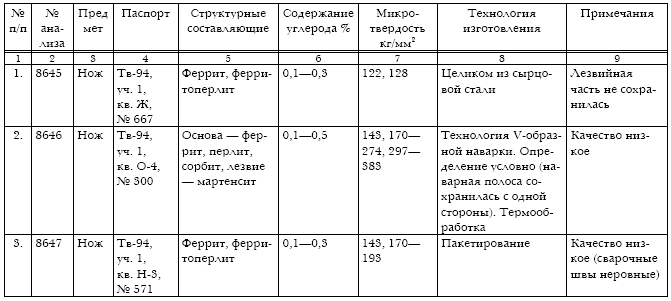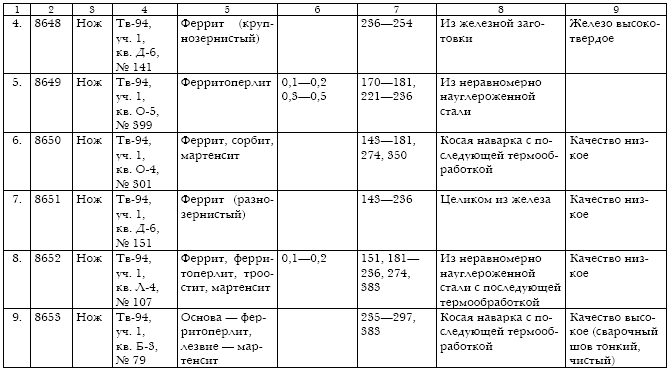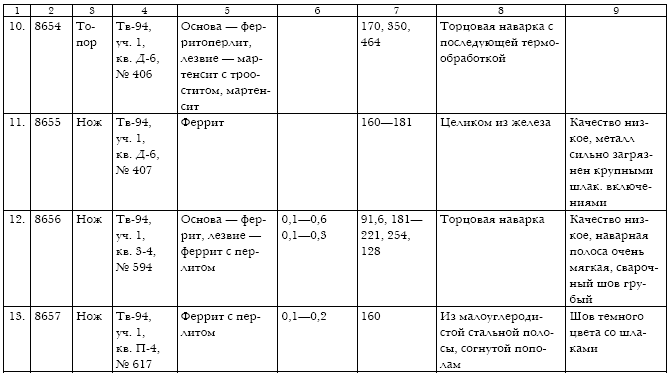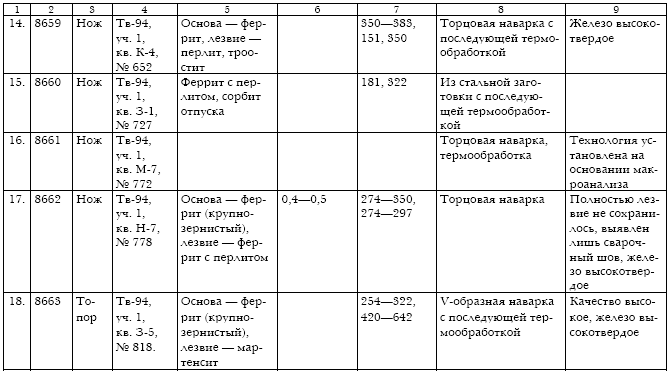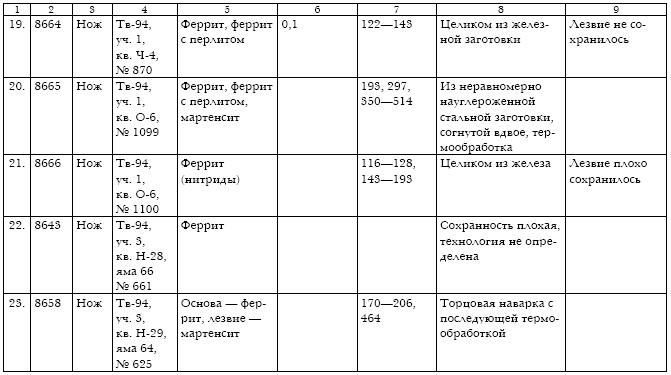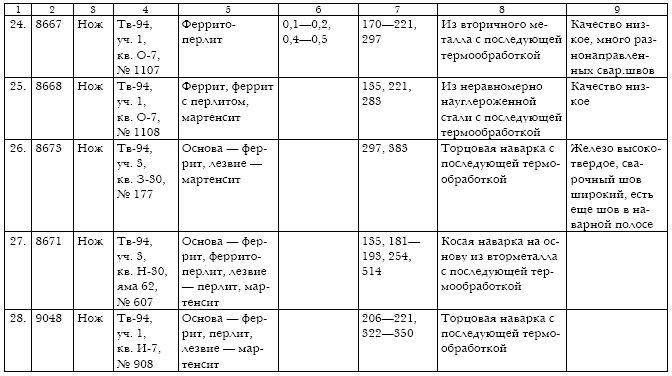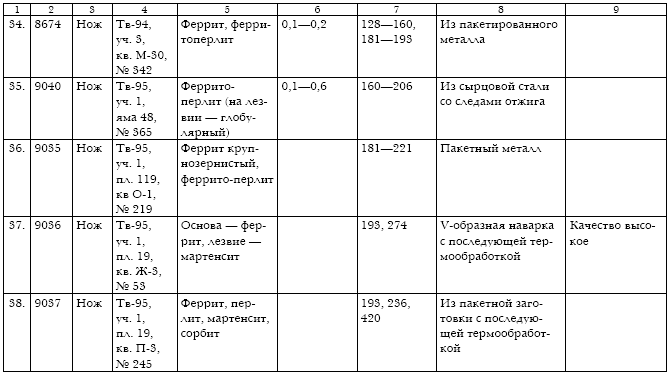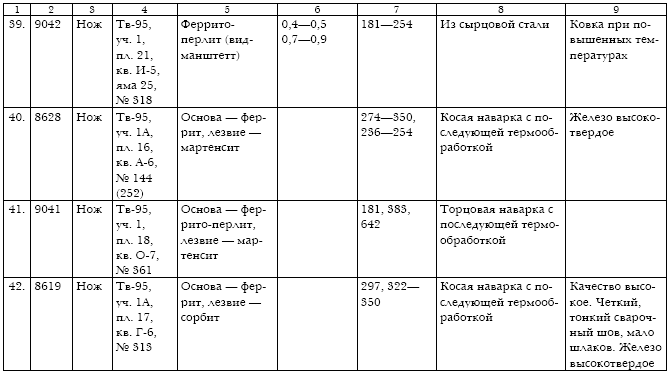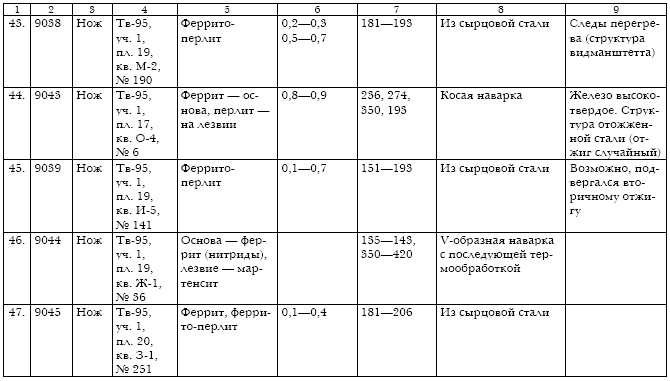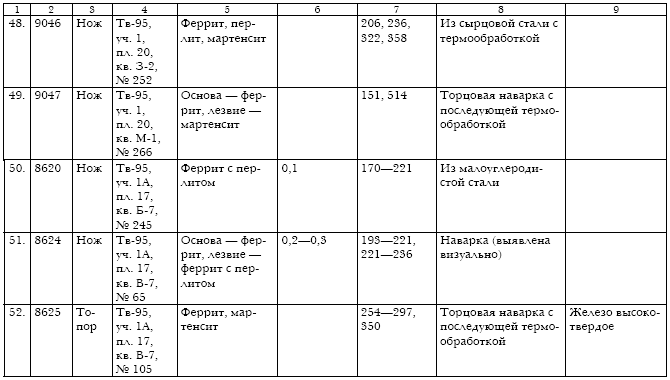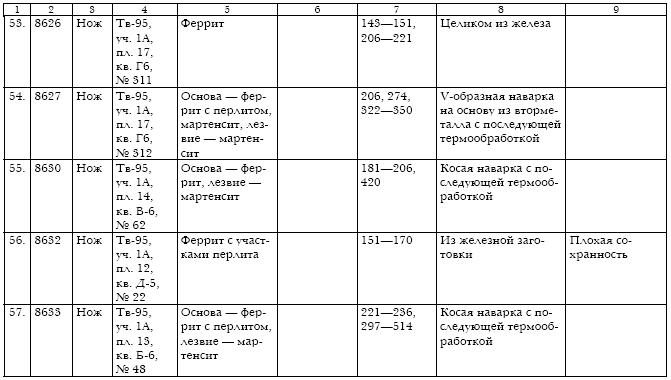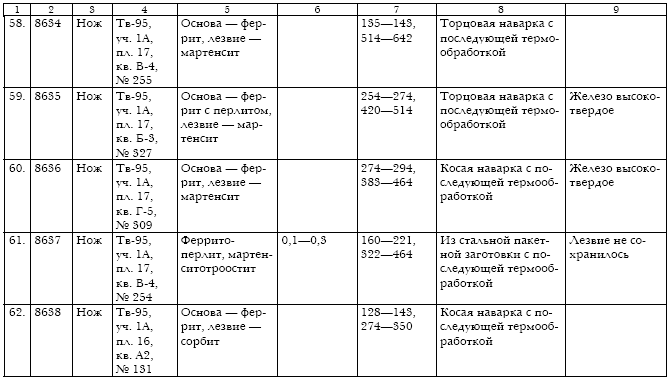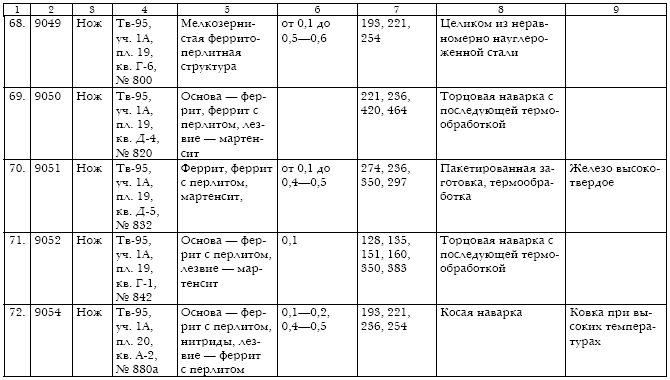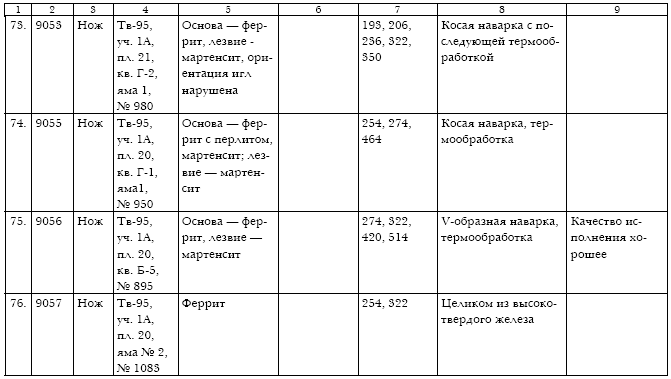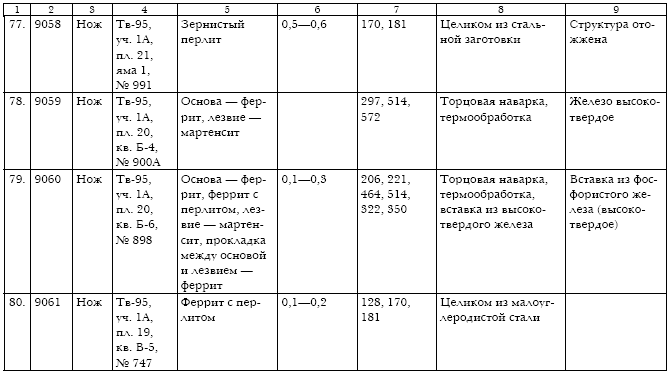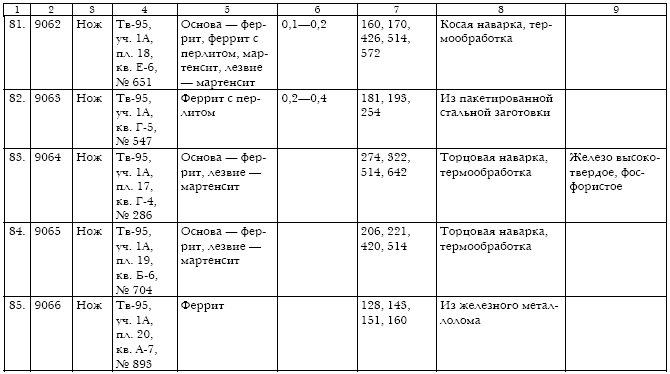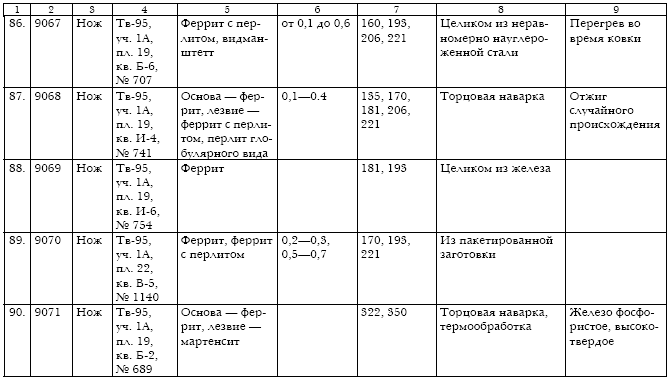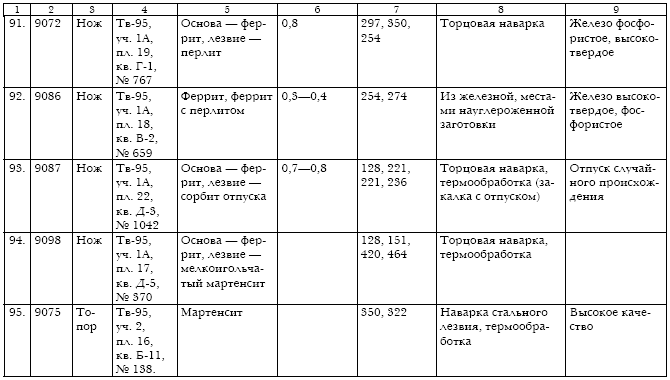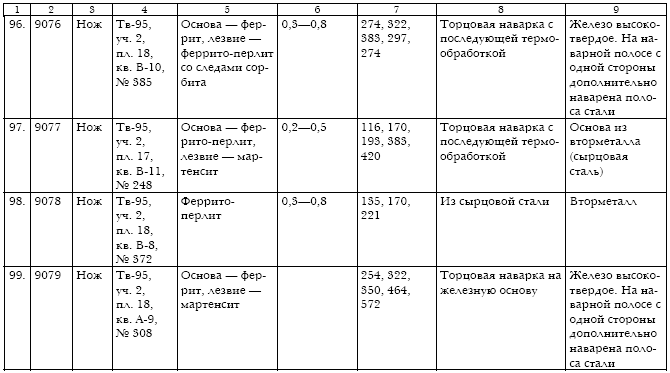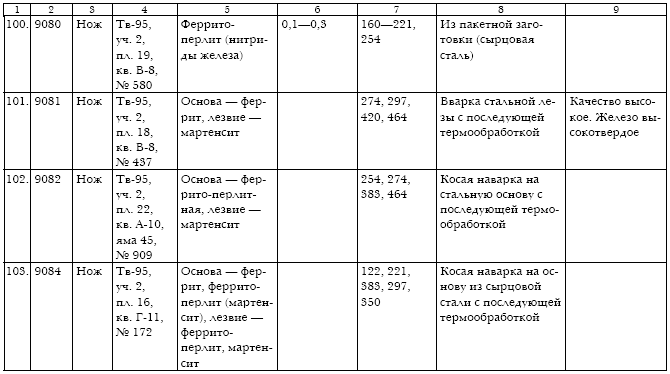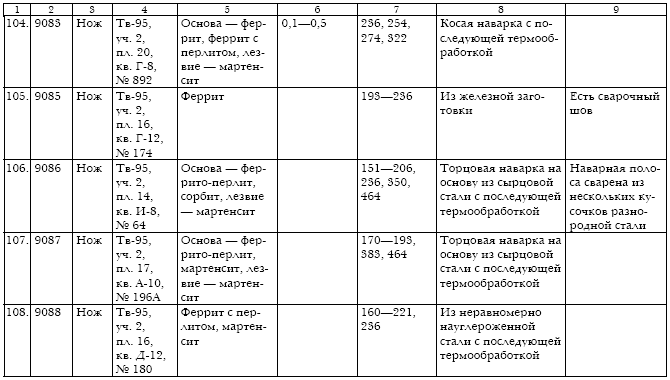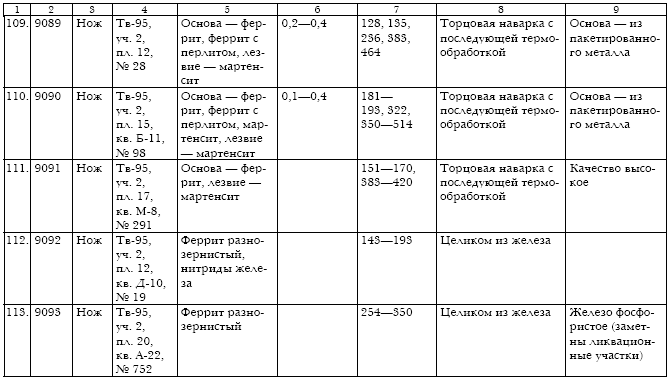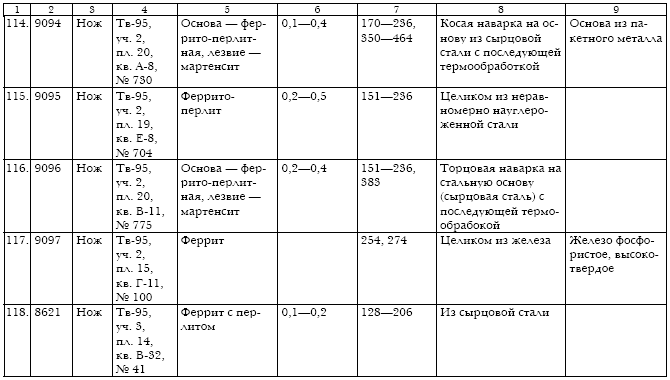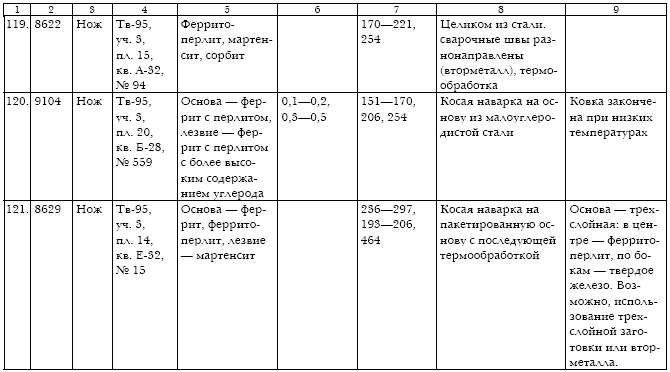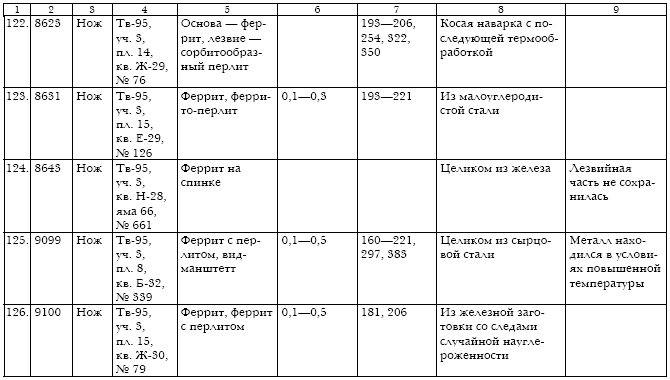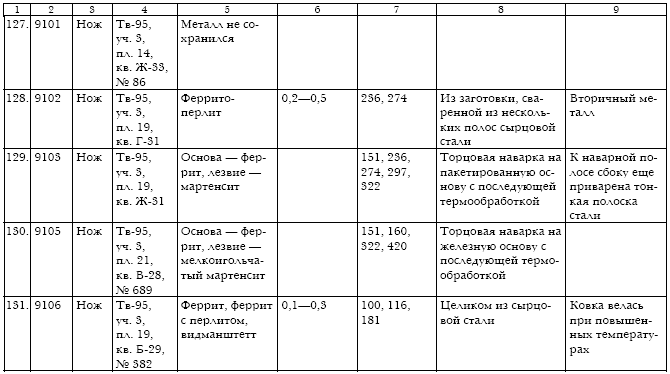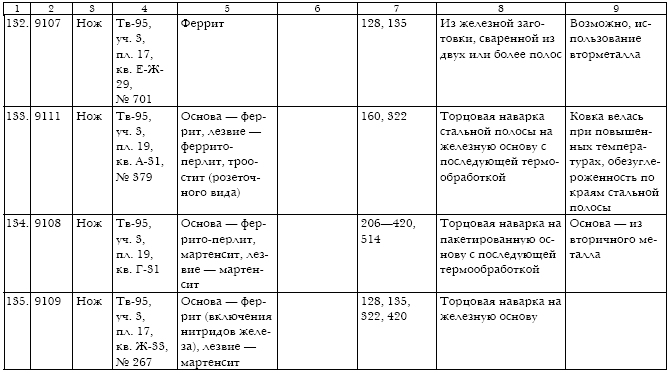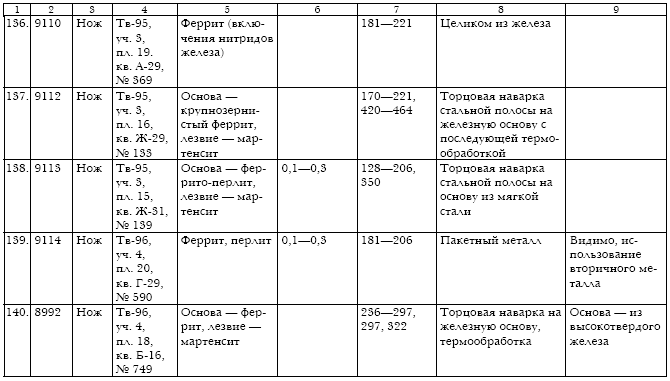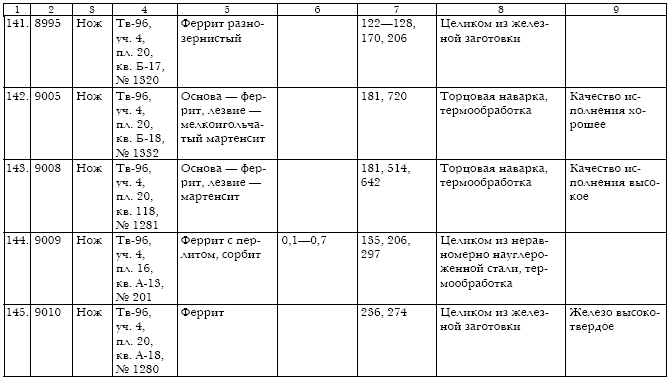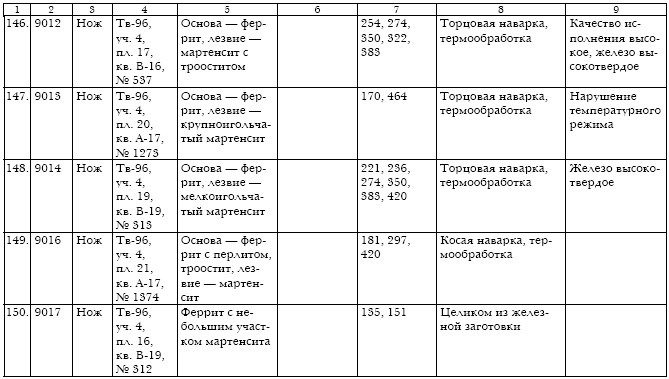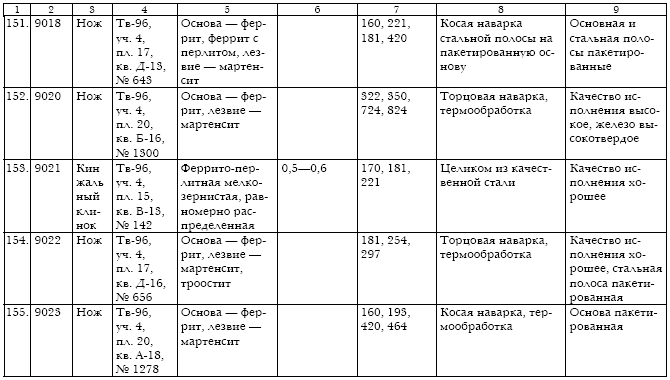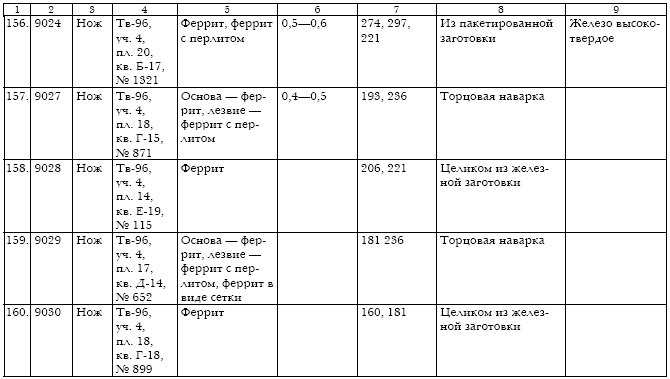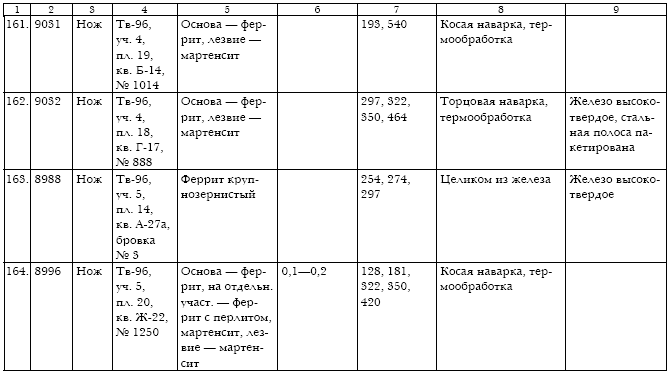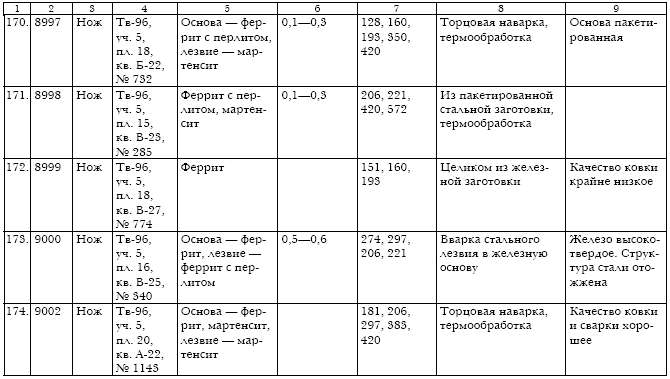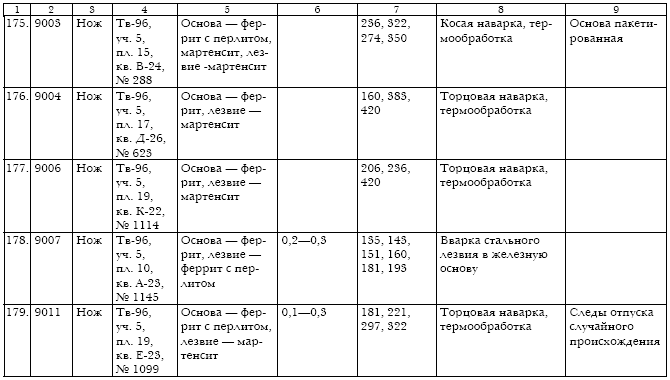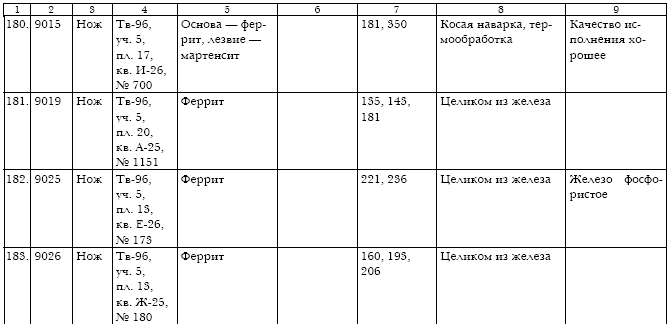In Moscow picture is different. Despite the city emerged as an outpost of the Vladimir-Suzdal principality, with its blacksmith’s craft following the northern traditions, the Moscow blacksmiths on the early stage (the 12th— 13thcc.) show strongly manifested southern production traditions, clearly expressed by group I. This feature may be explained taking into account the historical evidences concerning the population inflow to Moscow from the southern Russian territories invaded by the Mongols. The production traditions of minor towns (Kolomna, Rostislavl Ryazansky, Torzhok, Serensk, Izborsk) had survived after the Mongol invasion. In connection with the said the situation in Serensk deserves special attention: substantial shifts in the technological priorities of the blacksmith’s craft had taken place there before the town was devastated by the Mongol army, whilst after the town’s revival local craftsmen continued to work in the traditions formed in the early 13thc.
Technological group I prevailed in the Golden Horde period in the materials from the rural sites. This phenomenon is evidently connected with the very nature of the rural blacksmith’s production, which presupposed the work of universal craftsman. In such case no sophisticated technologies could have been applied. On the contrary, the objects produced according to the technological schemes associated with group II were supplied to the rural sites mainly from the urban craft centres.
The published data on the analysed materials (first of all those dating from the 12thand the 13thcc.) show that no discontinuity in production traditions caused by the Mongol invasion can be traced, despite one may have expected such a situation.
Nonetheless, one cannot deny that from the general economic standpoint the Mongol yoke had substantially hampered development of metallurgical production. This can be clearly seen, when comparing our situation with rapid progress in West European ironmaking, with its big bloomery furnaces and introduction of mechanical drive, which made it possible to produce blooms up to 100–150 kg in weight and to start the purposeful production of cast iron as early as the 15thc.
We have undertaken some investigations of development of the blacksmith’s craft in the conditions of the Russian centralised state, drawing up the materials of the 16th— 17thcc. Unfortunately, our data concerning this period are much more limited than those from the earlier time. Still, such outstanding sites as Pskov and Moscow are represented by significant series of metallographic analyses and help to shape an idea on certain trends in development of the blacksmith’s craft in the Muscovite state. As a result of the performed investigation it can be said that this period was marked by domination of solid-steel constructions in blacksmith’s production. This phenomenon is related to some qualitative changes in production of ferrous metal — transition to the deliberate production of uklad-steel (bloomery steel). Introduction of this material opened wide prospects for manufacturing high-quality production with minimal expenses, which met the demands of the newly emerged all-Russian market. Whether the obtained data reflect the general situation in Russia is the point of the forthcoming researches. Anyway, the coeval materials from Vitebsk, Polotsk and Zaslavl in Byelorussia show the spread of similar technological schemes (Gurin 2000: 152–153).
It must be also noted that the tradition of producing objects with welded-on cutting edges survived. In Pskov such artefacts make up around 35 % of the total. The picture observed in the Byelorussian urban centres looks similar (Gurin 2000: 153). Evidently, in the 16th— 17thcc. this group of production was considered expensive, and, possibly, was made to order. It should be pointed out that some objects with welded-on working edges were produced until the mid 19thc. (Завьялов 1990: 154, 1998: 49).
The technical and technological foundations of the ironworking formed by the blacksmith’s craft of Medieval Rus’ in the pre-Mongol time had not lost its significance despite the long period of destruction in the country’s history: its potential functioned until the epoch of Peter the Great, when both production of ferrous metals and ironworking reached the industrial level. As soon as favourable conditions for industrial development had been created, Russia was able to realise its technological potential evidenced by the breakthrough in development of iron metallurgy.
(Translated by L. I. Avilova)
Список сокращений
АИППЗ — Археология и история Пскова и Псковской земли
КСИА — Краткие сообщения Института археологии
МИА — Материалы и исследования по археологии СССР
ПСРЛ — Полное собрание русских летописей
РА — Российская археология
СА — Советская археология
САИ — Свод археологических источников
Приложение. Металлографические характеристики исследованных изделий
